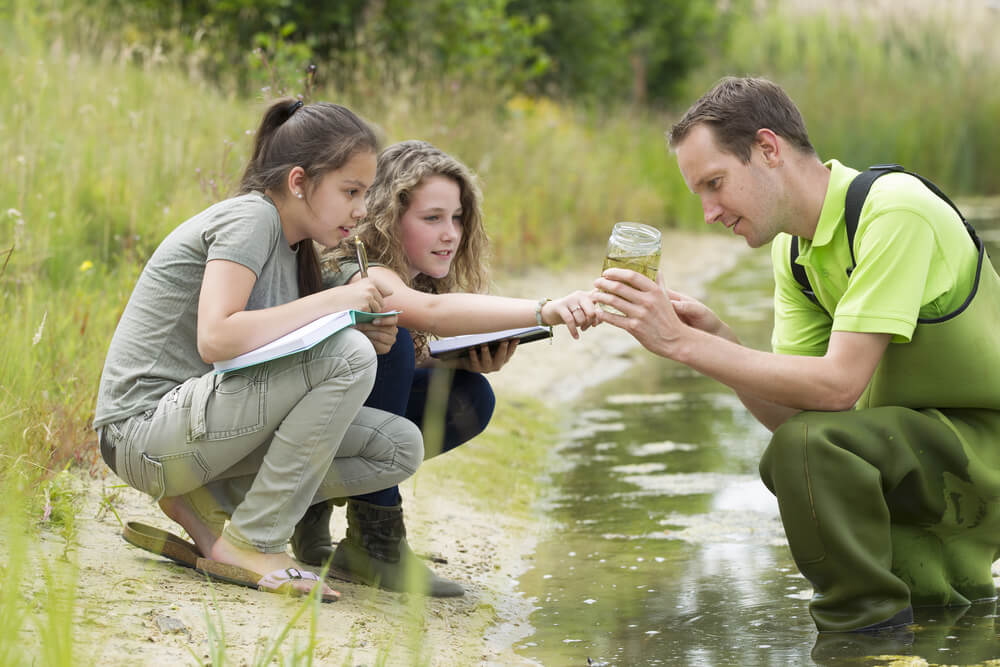
Sophie looked out the window as her parents drove her up the long driveway to the treatment center. She wasn’t so sure she need to be in rehabilitation for teens, but her parents were certain it was necessary. She couldn’t get a handle on her depression and anxiety and her doctors could only advise inpatient treatment.
Sophie, 14, was afraid of being away from her family, especially her little sister, Emily, who was only 8. Would the other kids make fun of her? Would she be able to stay alone for 3 months? Who was going to help her with her homework? These were just a few of the questions Sophie had as the car came to a stop at the front door.
So, what does happen on a daily basis in rehabilitation for teens? A typical day starts with breakfast and self-care, followed by group therapy, individual therapy, academics, chores, and recreation.
Self-Care
It is not unusual for teens to let themselves go when they are in a bad mental state. Teens entering a rehab facility may have completely ignored self-care because they are dealing with other, more pressing issues. Rehabilitation for teens requires that teens learn about the importance of self-care. It is hard to fix what’s going on in the mind if the body is in bad shape.
The idea of self-care can be overwhelming at first. People today consider self-care as maybe taking a long bath or treating oneself to a shopping spree; but, self-care is so much more. Self-care is unique to each person. For some people, self-care will be doing the dishes after being depressed for days on end; for others, it will be going to a movie after a bad week. However you practice healthy self-care is okay.
Teens can wrongly deduce that self-care is a selfish act, but there’s a difference between being selfish and practicing self-care. Self-care is about learning to love and care for yourself. It can be challenging, but showing yourself patience, compassion, and love is the foundation of getting and staying healthy.
Self-care is also about eating right. Teen rehabs include learning about proper eating habits and what’s good for the body. If a teen has an eating disorder, this is also a critical part of their treatment plan. Many teens overuse caffeine and other legal substances to help them cope, but they don’t realize how that can damage multiple body systems and interfere with sleep.
Sophie never once thought about self-care as a way to cope with her depression and anxiety. Putting that focus on positive ways to care for herself helped her start the process of coping with her feelings. She was also used to skipping breakfast – and she never once thought it could be detrimental to her overall health or even contribute to her depression.
Once teens have practiced self-care and had a nutritious breakfast, they move on to the next order of the day: group therapy.
Group Therapy
Group therapy can be intimidating and scary. Most rehabilitation for teens includes group therapy as a critical key in the overall process. Sophie was scared of group therapy. She felt like she was going to be judged and ridiculed by the other teens, especially those who didn’t understand depression.
Teens newer to the process can benefit by seeing others who work to overcome their issues and move forward with an enjoyable life. There is power and influence in group therapy, along with support, strength, and confidence to be gained from one another.
Experts support the positive impact of groups in adolescent residential rehabilitation. While individual therapy will always be central to the teen’s recovery program, work done in group sessions, with an audience of one’s peers, recognizes the importance of peers at this stage of a teen’s life.
Teens tend to be more open and truthful in peer groups and can identify with feelings and issues expressed by their peers that they themselves may not have addressed yet. Identifying with other teens gives them a sense of belonging and hope that if their peers can develop, mature, and heal, so can they.
Professionally led peer group meetings are safe and structured, allowing students to gain insight and possibly learn and perfect new coping mechanisms for life. Sophie wasn’t sure at first about going to group, but in time she saw the value of knowing she was not alone and that others struggled just as she did.
Group also provides accountability among students; as a group, they make a commitment to working together on their issues. The more Sophie went to group, the more confident she was to help others, which promoted her self-esteem and gave her a sense of personal growth.
After group, students would then attend individual therapy – a place Sophie wanted nothing to do with.
Individual Therapy
In individual therapy, it is common to address issues even the patient has no desire to address. It is very painful to admit problems, relive traumas, or talk about embarrassing subjects. Sophie felt so ashamed by her self-perceived weakness. She didn’t want to go into therapy and admit that she was not strong enough to deal with her problems on her own. She wanted to be like her parents – tough cookies who never let anything get in the way.
But as part of a teen rehab program, individual therapy is a must. However, individual therapy has both advantages and disadvantages.
In individual therapy, the teens are guaranteed privacy and confidentiality. This is crucial for the teen to build a sense of trust in others and a comfortability with sharing their issues. The one-on-one attention from the therapist gives the therapist the opportunity to fully understand the specific problems of each teen and help them develop an individualized approach to treatment.
When working with a therapist one on one, the therapist can better analyze and treat the teen. This allows for the teen to work at his or her own pace, speeding up or slowing down as needed for proper adjustment. Individual therapy allows for the client to get a self-awareness of his or her needs without the distraction of a group setting. The therapist and teen can create a deep sense of trust and a positive working relationship.
However, individual therapy can have its drawbacks. Some teens may need to relate with other teens who share similar issues. This comradery in group therapy can be much more powerful than what a teen can find in individual therapy. Individual therapy also calls for a certain level of self-motivation that many teens lack. The teen may not be committed to doing the work, making positive changes, or applying new techniques to dealing with his or her issues.
As she worked with her therapist, Sophie found that the individual attention really forced her to focus on her issues and not get distracted by the group therapy dynamics. Sophie came to terms with her past traumas and learned how they affected her depression and anxiety. And all of this therapy was time consuming, leaving Sophie feeling a bit anxious about her schoolwork.
Academics
Sophie was really worried about how she was going to keep up with schoolwork in with residential rehabilitation treatment. She had always been a good student and didn’t want this 90-day program to put her behind. Sophie was relieved to find out that her treatment center had a great academics program.
It’s not uncommon for teen rehab centers to offer academic programs so teens don’t fall behind in school. Some centers use tutors or even licensed teachers to help keep the teens on track. Academic programs offered by teen rehab facilities can be designed as self-study or distance-learning through an online learning platform.
During their stay at teen rehab centers, teens work on school assignments while attending individual therapy and group therapy. Tutors or teachers evaluate where teens stand academically. They teens are provided with academic support to help them reach their academic goals. At many teen rehab centers, residents are expected to finish their schoolwork, including all homework assignments.
Sophie found the tutors and teachers at her facility to be extremely helpful. They were kind-hearted, patient, and understood the frustration that comes with anxiety. They helped Sophie with her AP course work, catching up on where she was behind, tutoring when she didn’t understand something, and even getting her mindset ready for the SAT.
Sophie never realized how anxious she was about her schoolwork until she started working on her own at the rehabilitation facility. She was scared to flunk English and math because she really wanted to be the first in her family to go to college. She never realized it before, but her parents put a lot of pressure on her to succeed academically. With the help of her therapist, Sophie came to terms with her academic goals and created a realistic plan to help her get into college.
After schoolwork was done, Sophie went to the cork board to see what her chores were for the afternoon.
Chores
Chores were something Sophia actually looked forward to. She had a list of chores at home and having them at rehab gave her a sense of normalcy. For many teens with mental health issues, life has become unmanageable by the time they enter a rehabilitation program. They often cannot follow daily routines, including doing chores around the house. When this is the case, teens need to learn how to build structure and schedules into their daily lives.
Having assigned daily chores helps teens who need it understand the value of a routine. Most teens don’t realize that chores are a functional part of daily living, and they need to find a way to live functionally. Sophie particularly liked doing laundry and helping with the cooking. She had a roommate who loved washing dishes and vacuuming; and most of the boys had chores like taking out the trash, cutting the grass, or raking leaves.
In the rehabilitation environment, chores help teens prepare for the small stuff of daily living that seem overwhelming when they are dealing with mental health issues. And while therapy, school, and chores are essential parts of a daily schedule, there must also be time for recreation – it can even be therapeutic!

Recreation
While Sophie was not always a social butterfly, she found out quickly that recreation time was a great opportunity for talking with others who found themselves in the same, desperate situation. Whether it was playing an organized game or just tossing a ball around, Sophie grew to look forward to recreation time.
Most facilities use some kind of recreational therapy as a therapeutic treatment option. It calls on the teens to use recreational skills to address limitations of the individual. These limitations are often psychological or social. But anything that prevents a person’s happiness and a person’s daily ability to function can be dealt with through recreational therapy.
Sophie, for example, was never athletic. But with the encouragement of her therapist and her groupmates, she started playing volleyball with some other residents. They never kept score – they just enjoyed playing the game. Sophie found after a few days of playing that she actually had some athletic bones in her body! This gave her self-esteem a great boost and also gave her something to talk about with the other teens at the facility.
This type of recreational therapy can improve a teen’s mental health, physical health, independence, relationships, and communication. Recreational therapy programs help reduce the side effects or symptoms of a mental health issue. They focus on improving all facets of a teen’s life.
Conclusion
Sophie’s 90 days were up. She was so happy to see her family, but, surprisingly, she was sad to leave behind the teens who had become her friends and support system. She was able to keep in touch with them via text and found that teen rehab was just what she needed to put her back on a path to success.




